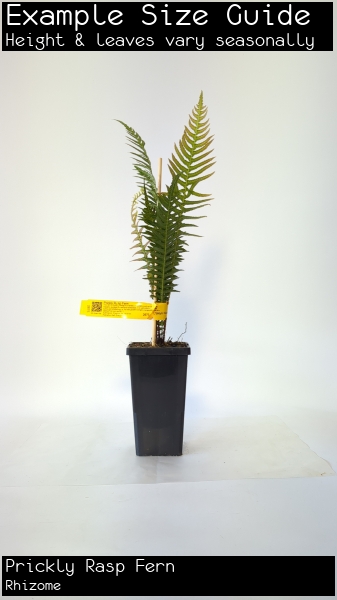Prickly Rasp Fern
Doodia aspera$17.90
When will it be in Stock?
We previously had the most to buy in Mar and Apr. They are unlikely to be available in Dec and Jan. Remember to click above to get notified when it is available once more.
Specifications of Prickly Rasp Fern
Preferred Climate SubtropicalLearn About Climate Zones
Grown From RhizomeLearn About Propagation Methods
Max Height (when in the ground with good conditions) 0-1m
Plants required to Pollinate 1 (Self Pollinating)Learn about Pollination
Can it Handle Frosts? Yes
Amount of leaves in Winter? All Leaves (Evergreen)
Customers also bought
These plants are often purchased together. Also check plant information for suitability in your orchard.































